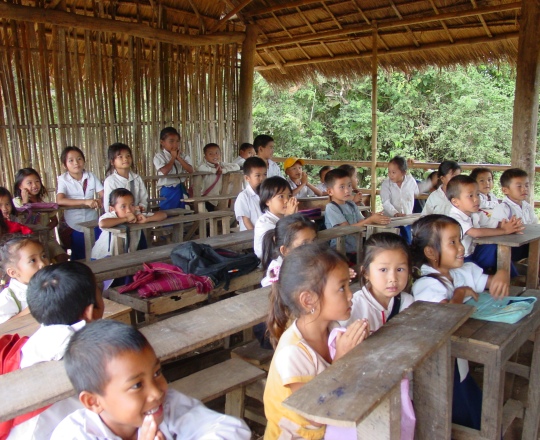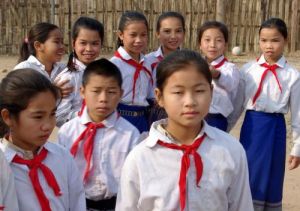Ban Faen School Appeal : Laos
This was the first project for LVCF, and was brought about by Dermot Macward's experience taking Redspokes Cycle Tours through the remote village of Ban Faen in Northern Laos, with local guide Ken Phetxayphone who lived in the village. Like many Lao villages, there were many children, but the school was too small for them all and had an earth floor which became mud during the rainy season. Early Redspokes tour participants had whip-arounds and collected enough money to provide a concrete floor which improved things somewhat, but did not address the problem of size and facilities.
It was clear that the village would benefit significantly from a new school and the village elders were consulted and as Lao communities work a spirited discussion ensued with how the village should make best use of the money. The project they decided was best fitting was to address the education of children within the village to make a difference to them and their futures. This ideal became a founding principle of LVCF, to work with the communities and generate a fund from which they could improve the infrastructure that was of most importance to the community.
After establishing that a complete new school could be built for around $8,000 if the villagers provided their labour for free, Dermot and the other founding members decided to set up a formal charity to raise the funds - hence the establishment of Laotian Village Community Fund - LVCF. The funding had a great start after Dermot made a presentation to St. Aloysius School in North London - the school decided to twin itself with the Ban Faen School and donated its Lent collection to LVCF - £2,400 in all. Following that many people made donations and we held other fundraising events - in no time we had raised enough cash to pay for the materials.
We were nervous about sending cash to a remote village and needed people we could trust - but we had established good relationships and knew that they were fair people. After some education in what the term 'receipt' meant, a good system was established with the project being divided into tranches and the next cash tranche being sent on attainment of certain construction milestones. The school was finished on schedule in 2005 with the enthusiastic help of the local community, and they now have a well constructed, sizeable school with playing fields and proper toilets. The project set some principles and a standard for future LVCF projects - that the project should be much needed by the community, it should be sustainable, and the local community should have a significant involvement - as well as making sure that the project is well planned and controlled by people we trust.




